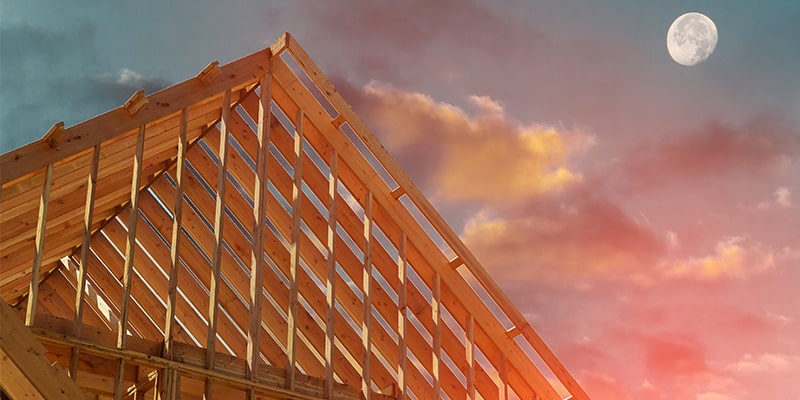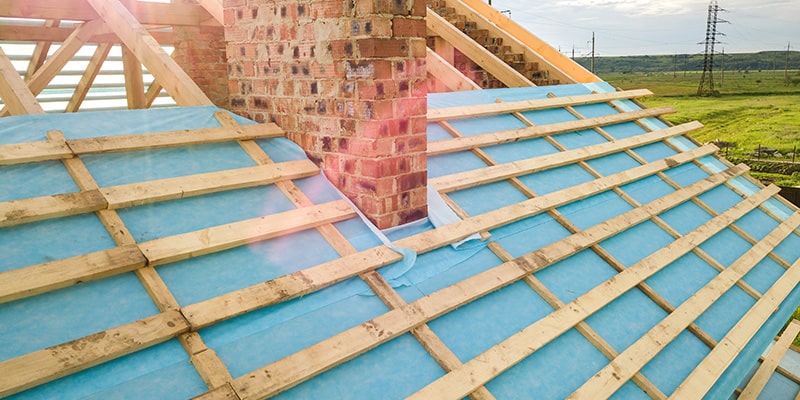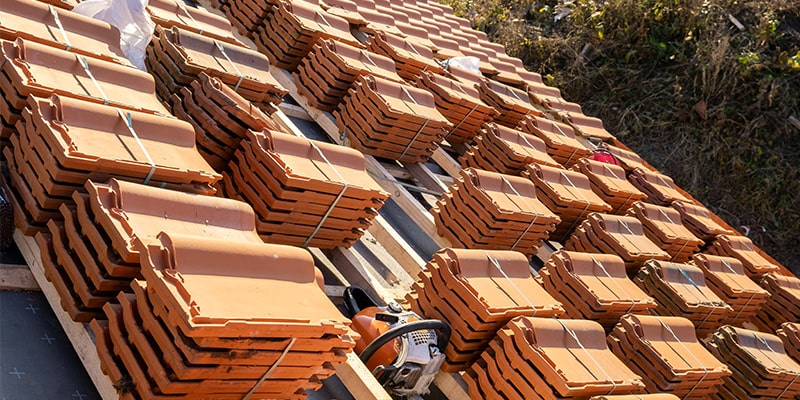Roof Batten Size Guide

It can't be denied that battens are an essential part of our roofs. The so-called ‘skeleton’ of the roof, help to keep all materials laid on top of them aloft, secure, and functional. Because of this, they need to be strong, reliable and properly installed.
One of the most important factors when it comes to batten installation is the size of the battens. This, along with the materials and the correct placement of the battens, are key to any construction project. It's precisely because of this that we’ve put together this guide to provide you with the basics. Including the most common batten dimensions, the sorts of projects that will require certain sizes, and more.
Contents
- What Are Battens?
- What Size Should Roof Battens Be?
- How Much Do Battens Cost?
- Should I Consult a Professional?
- What Size Roofing Batten Do I Need?
- Any More Questions?
What Are Battens?
In short, battens are lengths of wood that are laid in between rafters to secure the roofing felt, preparing your roof for tiles or slates. They go by several other names, including battening and roofing lath, though ‘roof battens’ tends to be the most commonly used term.
They can also be used alongside shingles and thatch, though it should be noted that the type of roofing material will directly the required spacing of your battens as well as their size.
Most battens share several similarities. The most common of which is the stamping that should be found on most reputable batten lengths – this should contain information including the species of tree from which the wood has come from, which will affect strength and durability.
What Size Should Roof Battens Be?
It is first important to note that not all manufacturers produce battens to industry standards and specifications. This does not necessarily mean they are faulty or unreliable, but it is best to stick to officially certified battens from reputable, well-known timber manufacturers for practicality as much as peace of mind.
That’s not to say that there aren’t outliers and exceptions, and many of these are also officially certified and sure to meet industry-standard requirements. However, when you are browsing batten sizes, it is a good idea you keep in mind a standard size recommendation which, according to the guidance from LABC is, 50 x 25mm (width x depth). Naturally this will differ depending on your roof covering – which we will explore more below.
But What About Length?
This tends to vary hugely, and will no doubt depend on manufacturer options. Some will cut the battens to the length you need, while others will have a series of set sizes. In the case of the latter, it is important to purchase a larger size that exceeds the requirements of your project and cut it down, rather than combining lengths of battens to make them longer, as this can negatively affect the strength of your battens and, by extension, your roof.
How Much Do Battens Cost in Relation to Size?
With this size in mind, we can start to look at how much battens cost and how their dimensions affect these prices. As you can imagine, battens tend to be more expensive with the more material that is used.
But how expensive? That depends on the material used. One of the most common timber types is the spruce tree, a softwood variety that is similar to pine and larch. Spruce timber is tough, reliable, and economical, with the 25x50mm version costing around £5.50 to £7.00 per linear metre.
A more economical 38x25mm alternative will set you back around £3.50 to £6.00 per linear metre. You will also find that Pine is another common batten material but, with a similar performance, it does tend to stay within the same price range.

Should I Consult a Professional?
Roof building and maintenance are both tough jobs, and there are many reasons you may find your particular project more challenging than what you expected. You may possess less experience, or weather conditions could be getting in the way. It could also simply be a case of the size of the project outweighing your available time. Whatever the case may be, you may feel the need to consult a professional tradesperson for advice.
This may well be the best approach. It is vital to get any part of roof installation as spot-on as possible, as the roof is such a vital part of any building. Batten size in and of itself is crucial to the stability of your roof, and so getting in contact with a specialised professional is a good way to ensure things run as smoothly as possible.
Whenever you are looking for professionals to help you out, be sure to check reviews and reputations online, and ask neighbours, family, and friends for recommendations.
What Size Roofing Batten Do I Need?
This brings us to the big question. Though it’s answer entirely depends on several circumstances relating to your project, including the size of your roof, the materials you intend to use, and the span of the roofing supports. Below are some methods that can help you find the best size batten for your build.
You will find BS 5534 to be the code of practice for slating and tiling, as well as roofing shingles. As the most common roofing materials (for pitched roofs), these are what we’ll be focusing on. BS 5534 applies to all new-build pitched roofs and vertical cladding, as well as any roofs that are being refurbished.
This standard also dictates the grading of battens, with minimum requirements and tolerances relating to several factors, including size, stated clearly. The standard requires graded battens to be more marked with vital information in a way that is both obvious and legible. This includes:
- Supplier name
- Batten size
- Third-party certification details
- Standard certification details
- Wood species

So, which battens do you need? Clay and concrete tiles, two common roofing material types, can be installed in either single or double-lap styles. For double lap tiles, the correct timber batten size is 38x25mm (width x depth). This is the same for single-lap installations using 450mm joist spans, while 50x25mm battens will be required for 600mm joist spans.
Slates can only be installed double-lap. Slates made from concrete will need 38x25mm battens for 450mm joist spans. 50x25mm will be needed for 600mm joist spans. Lastly, we have shingles. Timber shingles and/or shakes can be applied to battens with 38x25mm sizes for 450mm joist spans. If you have 600mm joist spans, you’ll need the larger 50x25mm battens.
Tiles
|
Double Lap |
38 x 25mm |
|
Single Lap @ 450mm joist spaces |
38 x 25mm |
|
Single Lap @ 600mm joist spaces |
50 x 25mm |
*Sizes for guidance only, please refer to manufacturer’s recommendations
Slates
|
Double Lap @ 450mm joist spaces |
38 x 25mm |
|
Double Lap @ 600mm joist spaces |
50 x 25mm |
*Sizes for guidance only, please refer to manufacturer’s recommendations
Shingles
|
450mm joist spaces |
38 x 25mm |
|
600mm joist spaces |
50 x 25mm |
*Sizes for guidance only, please refer to manufacturer’s recommendations
Any More Questions?
While the batten sizes we’ve laid out in this guide are the most common, they are by no means the only available, nor even necessarily the most suitable for your project. If you still have any questions about battens, or any other roofing materials and components, please do get in touch with our award-winning customer service team on 01295 565565, via email or using our live-chat down below. We’ll be happy to assist with any queries you may have.